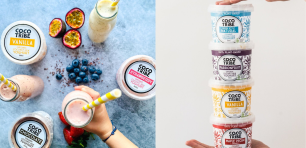
Jane Robertson, director and founder of Millwoods Shoes. Source: Millwoods Shoes
The Reserve Bank of Australia’s decision to lift the cash rate target to 4.1% on Tuesday was hardly unprecedented, as small businesses have spent the past twelve months adjusting, sometimes painfully, to the consequences of higher borrowing costs.
But with all signs pointing to an economic cool-down and further drops in consumer spending, the June rate hike is likely to rattle SMEs running out of expenses to cut.
In March, when the cash rate target was newly lifted to 3.6%, a handful of small businesses told SmartCompany they were navigating lost revenue, reducing non-essential spending, and delving into future customer needs.
This week, those same businesses detailed how they are managing today’s economic pressures, and how they plan to persevere through the rest of 2023.
“Really alarming” spending cut-back among families and expectant parents
Sophie Walker felt the consequences of interest rates in March, saying the number of small businesses purchasing ad space on her podcast, Australian Birth Stories, had fallen.
The entrepreneur said her media business was turning towards bigger brands, whose marketing budgets were more resilient to rising costs.
Now, Australian Birth Stories is launching a five-part series dedicated to managing finances through pregnancy, covering everything from accessing Centrelink and Medicare assistance, to managing the significant costs of IVF treatment.
Those topics were directly lifted from the challenges facing her listenership.
“It’s really alarming that people are cutting back on things like health insurance, seeing physios, and kid’s swimming lessons, so I feel like I’m acutely aware of the challenges that the population are facing, and trying to really support them as best I can,” Walker said.
The series is supported by Bank Australia, a big-brand partnership Walker says aligns with her personal values.
Yet it is hard to look past the way small business advertisers have dropped off since March, and what their absence suggests.
“I don’t think they’ll be coming back,” Walker said.
“I feel like every day in my inbox, I’ve got a previous client or a brand I know or work with that is closing down… the margins just aren’t there for them to sustain it.
“It’s devastating to see all the small brands that I’ve worked with and know personally just closing down, and I can’t see them reopening,” Walker added.
Australian Birth Stories itself is getting by, the founder said, even though she has reduced spending on external publicity and social media marketing.
At home, rising interest rates have elevated her family’s mortgage repayment costs, leading to a budget rethink.
“Although we’re doing well as a business overall, I’m still definitely trying to mitigate” surging cost pressures, Walker said.
Striving for growth as costs mount
Millwoods, a premium shoe label based in Wagga Wagga, cut back on graphic design expenditure and negotiated rising importation costs early in 2023.
Now, founder Jane Robertson said there are “very few” options available to insulate the business from new interest hikes, and the way increasing borrowing costs are rolling through to her customer base.
“I used to be a touch bullish to push the business harder, but now, I am extremely budget conscious,” she said.
“And where I would historically try new things, I am thinking twice and sitting back, working on ways I can get the same result in a more cost-effective way.
“In essence, I suppose it will slow the growth of the business, but growth is still something that we are striving for.”
The brand has recently hired its first employee, but like Walker, Robertson is now handling the brand’s social media marketing, instead of turning to professional help.
While Millwoods stockists requested payment extensions earlier in the year, some have canceled incoming orders altogether, saying the stock is simply moving too slowly to accept fresh shipments.
Online, customers are increasingly focused on the sale section.
Perhaps the most profound consequence comes through exchange rates, she said.
Millwoods imports stock from overseas, and despite Australia’s rising interest rates, the effective cash rate in the US currently sits between 5.00% and 5.25%.
This disparity is pushing the relative buying power of the Australian dollar down compared to the US dollar, making it more expensive for domestic traders to import products.
“Exchange rates are particularly difficult,” Robertson said.
“Our margins have been considerably reduced and it is causing some financial strain.
“I estimate movement in exchange rates but with the increase in shipping costs and the low level of the exchange rate I am doing everything I can not to increase our prices.”
Rates forecast to rise again
The Reserve Bank of Australia board will meet again in early July.
Westpac and ANZ expect another cash rate hike to come, given the RBA board’s concerns over resilient inflation.
Investment bank Goldman Sachs is now projecting the rate could surge to 4.85% in September, a level unmatched since December 2008.
Should rates rise to that level, it could be the toughest test a generation of entrepreneurs has experienced since COVID-19 pandemic restrictions reshaped the business landscape.
Handpicked for you

Amazon is surging to $5.5 billion in Australian turnover after becoming a “critical partner” for SMEs



COMMENTS
SmartCompany is committed to hosting lively discussions. Help us keep the conversation useful, interesting and welcoming. We aim to publish comments quickly in the interest of promoting robust conversation, but we’re a small team and we deploy filters to protect against legal risk. Occasionally your comment may be held up while it is being reviewed, but we’re working as fast as we can to keep the conversation rolling.
The SmartCompany comment section is members-only content. Please subscribe to leave a comment.
The SmartCompany comment section is members-only content. Please login to leave a comment.